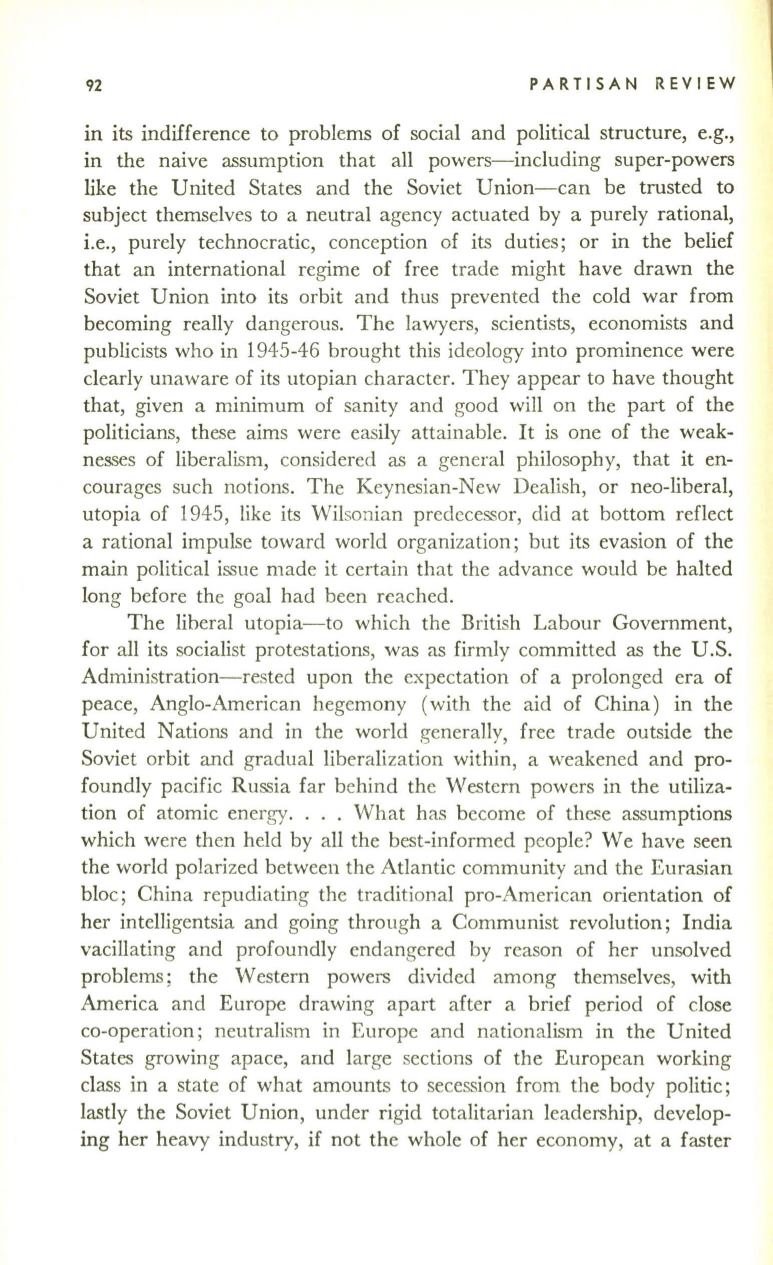
92
PARTISAN REVIEW
in its indifference to problems of social and political structure, e.g.,
in the naive assumption that all powers-including super-powers
like the United States and the Soviet Union-can be trusted to
subject themselves to a neutral agency actuated by a purely rational,
i.e., purely technocratic, conception of its duties; or in the belief
that an international regime of free trade might have drawn the
Soviet Union into its orbit and thus prevented the cold war from
becoming really dangerous. The lawyers, scientists, economists and
publicists who in 1945-46 brought this ideology into prominence were
clearly unaware of its utopian character. They appear to have thought
that, given a minimum of sanity and good will on the part of the
politicians, these aims were easily attainable. It is one of the weak–
nesses of liberalism, considered as a general philosophy, that it en–
courages such notions. The Keynesian-New Dealish, or neo-liberal,
utopia of 1945, like its Wilsonian predecessor, did at bottom reflect
a rational impulse toward world organization; but its evasion of the
main political issue made it certain that the advance would be halted
long before the goal had been reached.
The liberal utopia-to which the British Labour Government,
for all its socialist protestations, was as firmly committed as the U.S.
Administration-rested upon the expectation of a prolonged era of
peace, Anglo-American hegemony (with the aid of China) in the
United Nations and in the world generally, free trade outside the
Soviet orbit and gradual liberalization within, a weakened and pro–
foundly pacific Russia far behind the Western powers in the utiliza–
tion of atomic energy.... What has become of these assumptions
which were then held by all the best-informed people? We have seen
the world polarized between the Atlantic community and the Eurasian
bloc; China repudiating the traditional pro-American orientation of
her intelligentsia and going through a Communist revolution; India
vacillating and profoundly endangered by reason of her unsolved
problems; the Western powers divided among themselves, with
America and Europe drawing apart after a brief period of close
co-operation; neutralism in Europe and nationalism in the United
States growing apace, and large sections of the European working
class in a state of what amounts to secession from the body politic;
lastly the Soviet Union, under rigid totalitarian leadership, develop–
ing her heavy industry,
if
not the whole of her economy, at a faster


